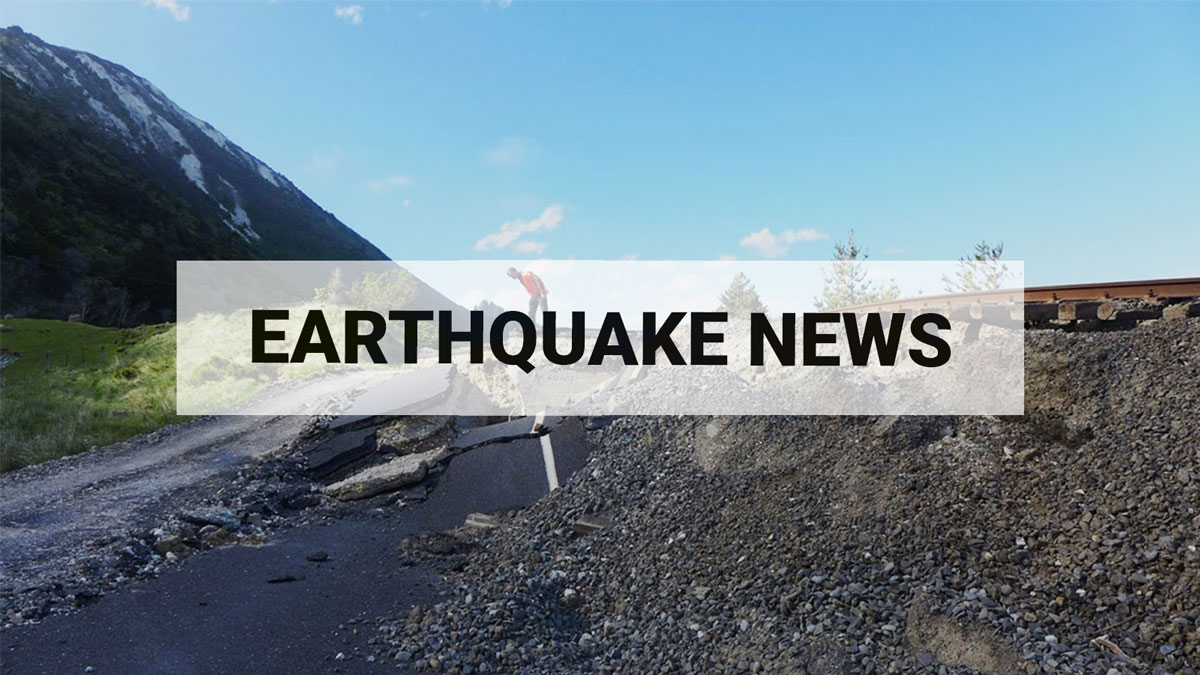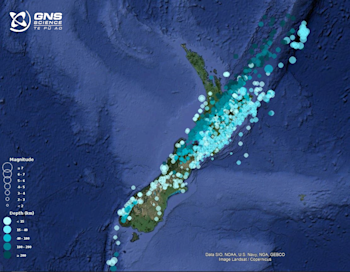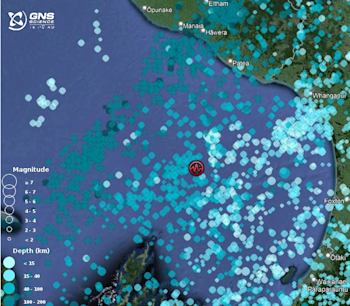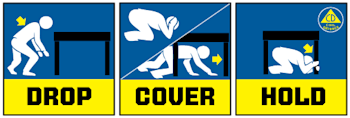
Felt any recent quakes?
If you’re an avid follower of GeoNet or a regular felt report submitter, you might have noticed that a few felt earthquakes over the past month have been near each other. Read on to find out a little more on this pattern and what the science is behind it.
Last month we located 2100 earthquakes in and around Aotearoa New Zealand. This is around the typical number that we expect the GeoNet network of sensors to record each month. What was interesting about April was that the majority of felt reports were in relation to just five earthquakes, three of which were located off the west coast of the North Island.
The earthquake with the most felt reports was a M4.9 that occurred on 30 April felt by almost 13,000 people across the lower North Island and the top of the South Island. This quake occurred at 80 km depth, in an area offshore the North Island, south-west of Whanganui, where records show us that such activity is typical.
The depths of earthquakes in this region mostly follow the shape of the Pacific Plate Subduction zone, their depths are shallower on the east and become increasingly deeper towards the west (see image below).
It is common that large and moderate earthquakes here are widely felt across Aotearoa New Zealand, because the energy travels up and along the subducting slab to the surface – energy waves moving along a subducting slab lose less energy as they travel – resulting in the earthquake being felt more widely.
We described what is causing this seismicity pattern in the past few weeks, during our journey exploring the Hikurangi Subduction Zone , the largest plate boundary fault in Aotearoa New Zealand, you can read the series here.
Our new Shaking Layers maps illustrate the intensity of ground shaking expected from earthquakes with magnitude 3.5 or greater in different parts of the country. These interactive maps can be explored to see if the shaking intensity people felt in their location matches what the data tells us, or to check the level of shaking friend or whānau may have experienced where they are located.
The maps are produced from a combination of measurements of the earthquake shaking at strong motion sensors and ground motion modelling that uses information about geologic materials throughout the country and calculations of how earthquake energy decreases as it travels to estimate the shaking intensity in-between sensor locations and throughout New Zealand.
On average, we locate over 20,000 earthquakes a year in and around Aotearoa New Zealand. While you can rest assured that GeoNet has eyes on Geohazards 24/7, it’s important to be prepared when living in a seismically active country, keep reading to find out how.
Felt the quakes? Time to get prepared!
Hearing about, and feeling quakes is a good reminder for everyone to make simple checks on their homes, and to take actions that will help keep their whānau and properties safe.
“While these quakes are unlikely to have caused damage, they are strong enough to get our attention and remind us that we live in a part of the world that is very seismically active,” says EQC Public Education Manager Hamish Armstrong.
EQC Toka Tū Ake encourages New Zealanders to use these reminders to check up on their home and take steps to make it safer and stronger for the inevitable reality of larger quakes in the future. The Commission says a great place to start is with some simple checks around the home to identify elements that could be modified to prevent damage to homes, or injuries to people.
“A home that’s properly secured to its foundations will likely experience less damage during an earthquake,” says Hamish.
“If your home has a suspended timber floor, you may be able to go under your house to check foundations are in good condition and that correct fastenings and bracings are in place. It’s important that foundations are well connected to the house above as this will help minimise movement and damage in a larger earthquake.
EQC also recommends checking your chimney. Past earthquakes have shown how dangerous and damaging chimneys made from brick or unreinforced concrete masonry can be. When these extend above the roofline they can collapse to the outside of the house or through the roof.
“No matter its age or type, if your chimney is already showing signs of wear and tear, or damage, it could need immediate attention. Look for: cracks, loose or broken bricks, loose masonry or plaster, and leaning or twisting,” Hamish says.
“Look around your home for tall and heavy furniture and appliances such as bookcases, cabinets, tallboys, TVs and hot water cylinders and make sure they are securely fastened so they won’t topple over in a quake.
“Another simple action is to move big and heavy objects from high storage locations to cupboards or shelves that are lower down. Having these items low means that they can't fall onto you or a loved one during a quake, which could result in a serious injury,” Hamish explains.
“Finally, take a moment to check up on your insurance. Do you understand what would and wouldn’t be covered for should you suffer damage to your home or land from a natural hazard?
For more detailed information about making your home quake safe, head to our friends at EQC Toka Tū Ake.
So why do we get so many earthquakes? Watch our video and find out!
Read more: getting prepared for earthquakes, tsunami and landslides.
Earthquakes can occur anywhere in New Zealand at any time. In the event of a large earthquake: Drop, Cover and Hold.
Remember Long or Strong, Get Gone : If you are near the coast, or a lake, and feel a strong earthquake that makes it hard to stand up OR a weak rolling earthquake that lasts a minute or more move immediately to the nearest high ground or as far inland as you can, out of tsunami evacuation zones.
Know what to do?
The National Emergency Management Agency (NEMA) has a great website with information on what to do before, during and after an earthquake.
Prepare your home. Protect your whānau.
There’s a lot we can do to make our homes safer and stronger for natural hazards. EQC Toka Tū Ake's website has key steps to get you started.
Media Contact: 021 574 541 or media@gns.cri.nz








